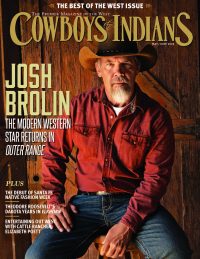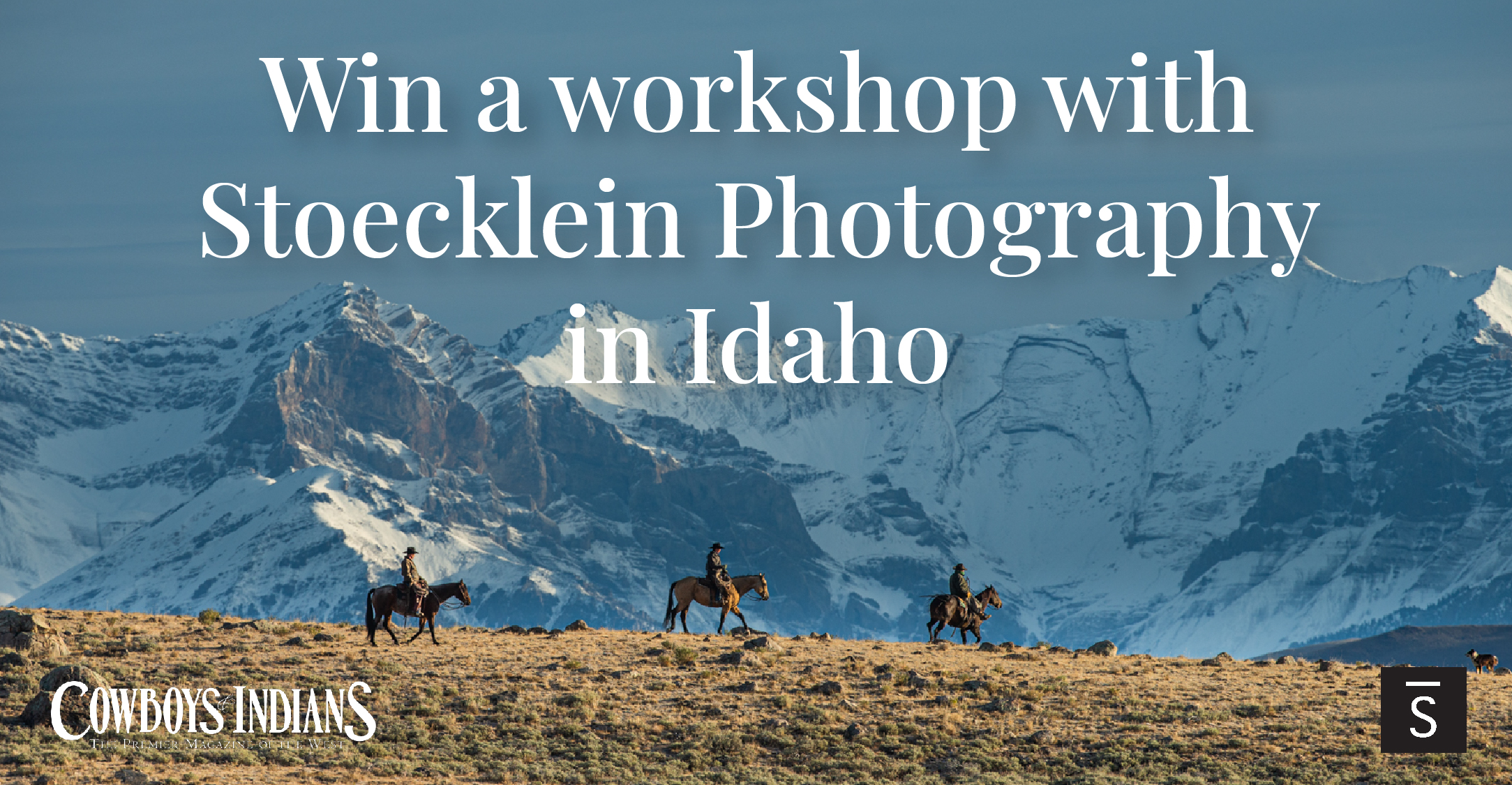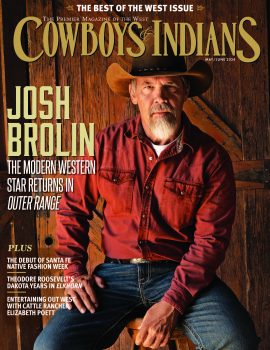A new look at one of our old favorites: On the occasion of the 110th anniversary year of his birth, we honor Duke with 110 memorable things about the actor, the icon, the man.
John Wayne was — and remains — as much an icon of the historical West as any of the legendary figures that were actually there. He is still the most recognizable symbol of a mythical era, and the idealization of the American cowboy’s rugged individualism, resourcefulness, and heroism.
In this, the 110th anniversary year of his birth, we celebrate his legacy with a collection of 110 moments, memories, and milestones from an extraordinary life.
1. John Wayne’s great-grandfather Robert Morrison emigrated from Ireland to America in 1799, after his participation in the Free Irishman Movement prompted the British Crown to issue a warrant for his arrest.
2. President Jimmy Carter on John Wayne: “In an age of few heroes, he was the genuine article. But he was more than a hero. He was a symbol of so many of the qualities that made America great.”
3. While still in elementary school, he had a pet Airedale named Duke. Seeing the boy and his dog together, local firemen began referring to the boy as “Little Duke” and then just “Duke.” The nickname stuck.
4. An honors student and senior class president at Glendale High School, he performed a scene as Cardinal Wolsey from Henry VIII at the annual Southern California Shakespeare Contest.
5. He made his film debut in Brown of Harvard (1926) while still a member of the University of Southern California’s football team. As the stunt double for actor Francis X. Bushman, he is seen from the back only, running down a football field and being tackled from behind.
6. In the Lillian Gish film Annie Laurie (1927), Wayne wears a kilt as one of dozens of extras recruited as Scottish Highlanders.
7. The first time he received an on-screen credit was for the 1929 film Words and Music. He was billed not as Marion Morrison, his given name, but as Duke Morrison.
8. He spoke his first words on-screen as a naval cadet in John Ford’s 1929 film about the Army-Navy football rivalry, Salute.
9. Did John Wayne ever meet Wyatt Earp? He once mentioned having done so while still working as a prop man for John Ford, who was an acquaintance of the legendary Tombstone marshal.
10. Wayne on how renowned stuntman Yakima Canutt influenced the way he spoke in films: “I noticed that the angrier he got, the lower his voice, the slower his tempo. I try to say my lines low and strong and slow, the way Yak did.”
11. Several of John Wayne’s early films are now considered lost. Among those for which no copy is known to exist are Speakeasy (1929), The Forward Pass (1929), and The Oregon Trail (1936).
12. John Wayne’s brief career as a singing cowboy known as “Singin’ Sandy” reportedly ended after a publicity tour stop, when his horse supposedly relieved himself just before Wayne started to sing. Wayne’s son Ethan heard it another way: All Duke’s singing on the film was dubbed. When fans asked him to sing on the tour, he was so embarrassed, he gave up singing.
13. During an early career stretch of forgettable film roles, a despondent Wayne met Will Rogers, who asked him what was wrong. “I’m making a terrible movie,” Wayne said. “But you’re working, aren’t you? Just keep it up,” Rogers replied. Wayne later called that “the best advice I ever got ... just keep working and learning, however bad the picture.”
14. He was a big man — 6-foot-4. He was also a big baby, weighing a whopping 13 pounds at birth (on May 26, 1907, in Winterset, Iowa).
15. John Wayne on his pre-stardom low-budget westerns: “My main duty was to ride, fight, keep my hat on, and at the end of shooting still have enough strength to kiss the girl and ride off on my horse — or kiss my horse and ride off on the girl.”
16. In 1933 alone, Wayne appeared in 12 films, from Telegraph Trail to Sagebrush Trail.
17. From 1938 to 1939, he made eight movies as Stony Brooke, a member of The Three Mesquiteers, a trio of heroic modern West drifters.
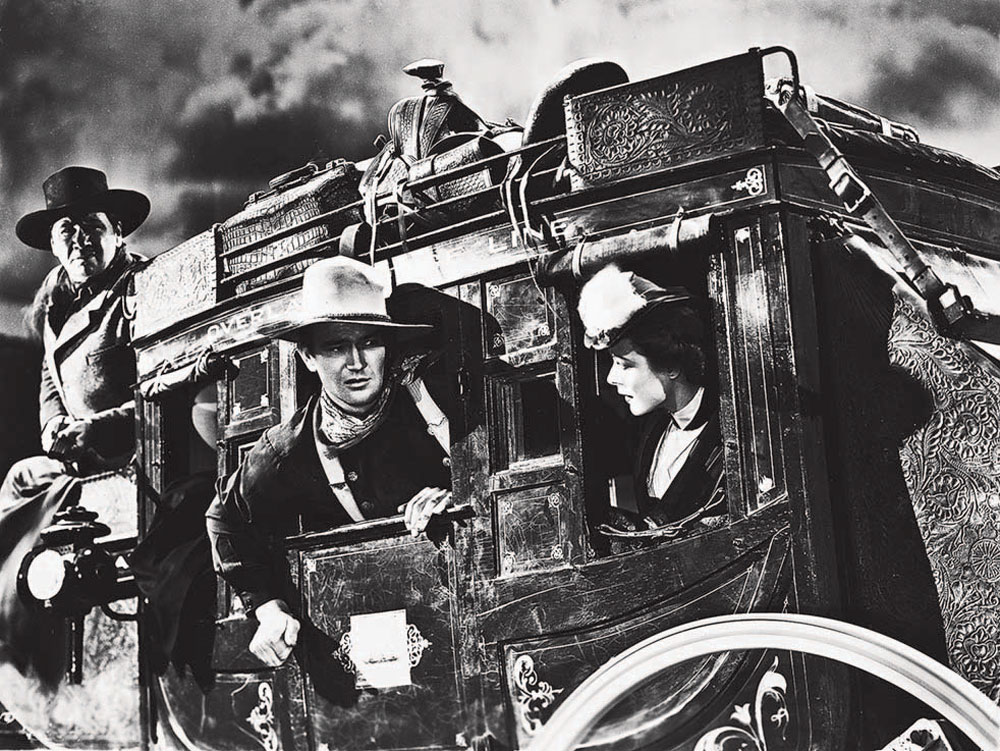
18. Whatever barbs critics could toss at John Wayne, no one could accuse him of being an overnight success. Stagecoach, featuring his breakthrough role as The Ringo Kid, was his 82nd film.
19. Wayne received a salary of $600 a week for Stagecoach. That same year, 1939, James Cagney was earning $12,500 a week.
20. John Ford on casting Wayne as The Ringo Kid: “He was the only person I could think of at the time who could personify great strength and determination without talking. That sounds easy, perhaps, but it’s not.”
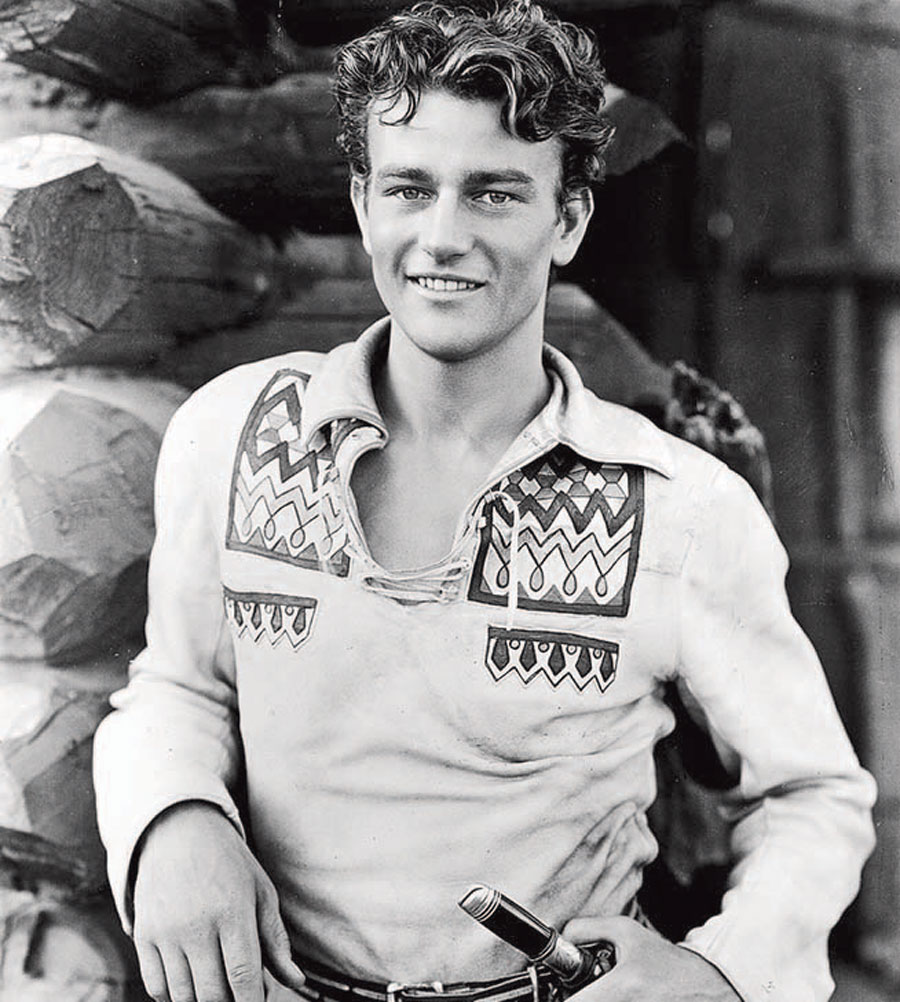
21. Why did The Big Trail (1930), released nine years before Stagecoach, not make John Wayne a star? The epic was shot in widescreen 70 mm but was released when theaters already converting from silent to sound films had no money to adapt to 70 mm technology. Audiences in all but a few theaters saw the movie with an extremely cropped 35 mm image that robbed The Big Trail of its spectacle.
22. How did “Duke Morrison” become John Wayne? Credit Fox studio head Winfield Sheehan, who wanted Duke to have a better name prior to The Big Trail ’s release. Sheehan was inspired by a book he had read on U.S. Revolutionary War Gen. “Mad Anthony” Wayne.
23. The 1932 film Two-Fisted Law marks the first of five times that the actor nicknamed Duke played a character named Duke.
24. The quotable John Wayne: “I never trust a man that doesn’t drink.”
25. Wayne requested 35 mm prints of many of his films after completing them. That may have saved Stagecoach after the original negatives were either lost or destroyed. He gave his copy to the American Film Institute.
26. Fort Apache screenwriter Frank Nugent on Duke’s imposing physical presence: “Having Wayne put his arm on your shoulder is like having somebody dump a telephone pole on you.”
27. Elizabeth Taylor on John Wayne: “He gave the whole world the image of what an American should be.”
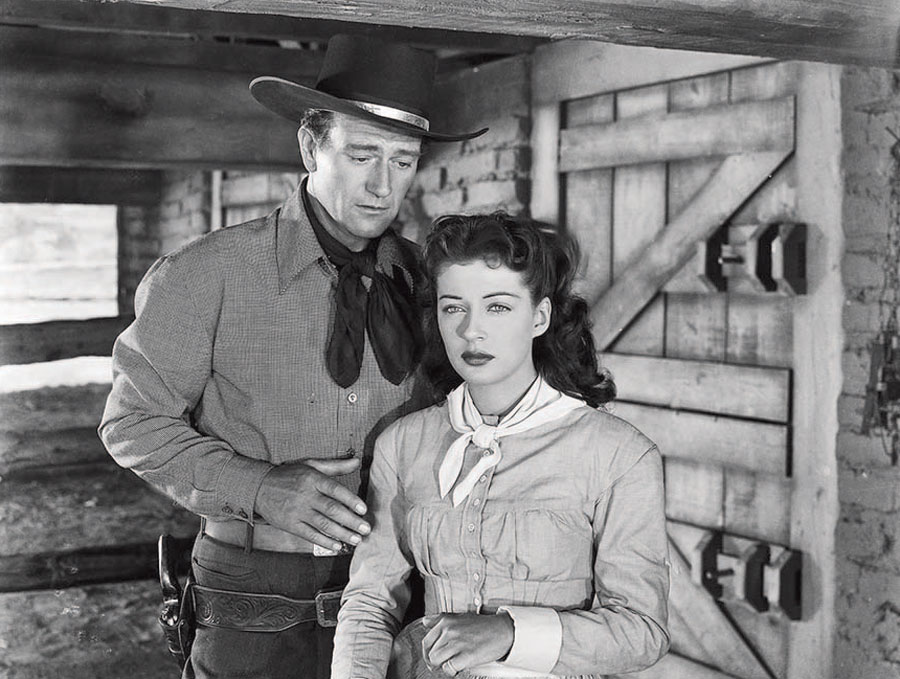
28. As producer of Angel and the Badman (1947), Wayne tried to get Gary Cooper, then Randolph Scott to play the role of Quirt Evans, before consenting to play it himself. Next time you see it, take note of how Quirt’s hat changes from black to white and back again throughout the film.
29. Tongue-in-cheek praise from John Ford, after seeing Red River (1948): “I never knew the big son-of-a-bitch could act!”
30. Red River director Howard Hawks on the climactic fight scene between John Wayne and Montgomery Clift: “It took us three days to make Montgomery Clift look good enough to be pitted against Wayne.”
31. Wayne received a belt buckle from Howard Hawks during the filming of Red River. You’ll see him wearing that same buckle in subsequent Hawks films Rio Bravo, El Dorado, and Rio Lobo.
32. A sure sign of stardom: On October 8, 1949, eight John Wayne films were playing around the country simultaneously.
33. Though Duke did many of his own stunts early in his career, the closest he came to a fatal accident on a movie set happened during She Wore a Yellow Ribbon (1949). The cinch belt on his saddle loosened and he was thrown from a horse. He hit the ground and blacked out — directly in the path of about 50 stampeding horses. One brave wrangler diverted the team just in time.
34. In 1949, Wayne first appeared on the International Motion Picture Almanac’s list of the Top 10 money-making stars, determined by a poll of movie theater owners. He stayed in the Top 10 for the next 25 years.
35. He received his first Academy Award nomination as Sgt. John Stryker in the World War II drama Sands of Iwo Jima (1949). U.S. Marine recruiters discovered that enlistment always went up when the film was revived.
36. John Wayne on acting technique: “I read dramatic lines undramatically and react to situations normally. This is not as simple as it sounds. I’ve spent a major portion of my life trying to learn to do it well, and I am not past learning yet.”
37. John Wayne was featured in the Toby Press comic book series John Wayne Adventure Comics (1949 – 55), which ran for 31 issues. He was joined in these adventures by a sidekick named Bonanza Bob.
38. Wayne was not the first choice to play the title role in Hondo (1953); he was a last-minute replacement for Glenn Ford.
39. According to John Wayne biographer Michael Munn, Soviet dictator Joseph Stalin dispatched two Russian agents to assassinate Wayne because of the actor’s outspoken opposition to Communism. When Nikita Khrushchev met Duke in 1958, he told him, “That was the decision of Stalin in his last five mad years. When Stalin died, I rescinded the order.”
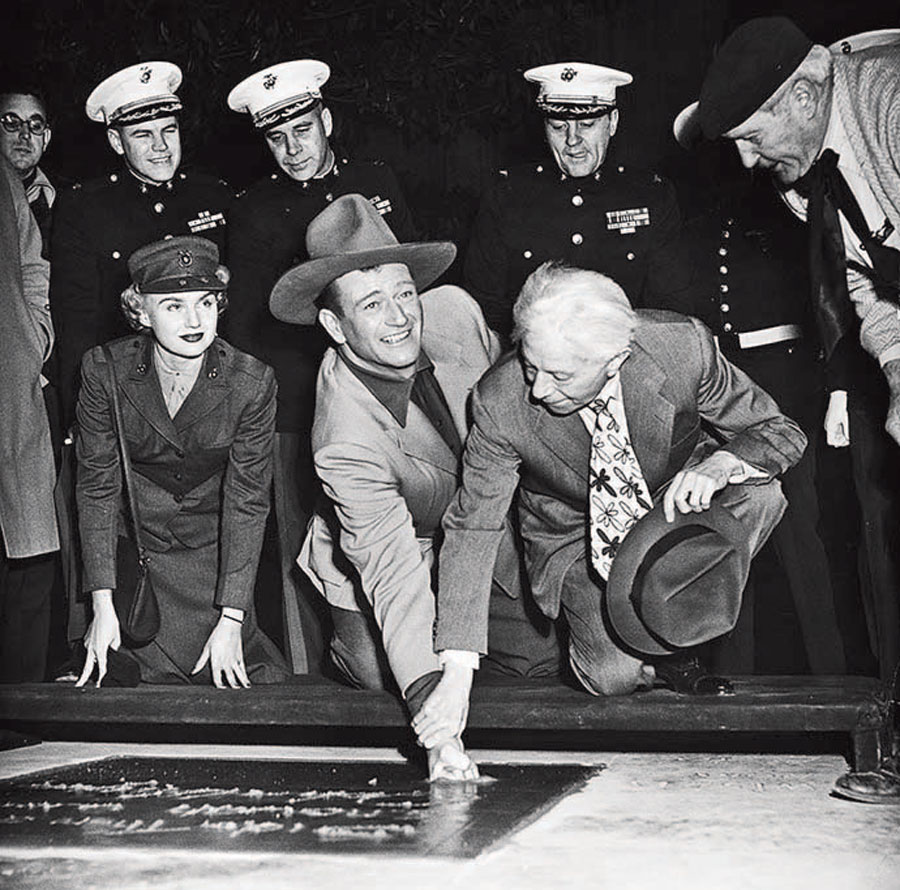
40. On January 25, 1950, John Wayne became the 125th star to put his hand- and footprints (in this case, fist and boot prints) outside Grauman’s Chinese Theatre. His concrete block is made from black cement from the black sands of Iwo Jima. The block was stolen — and broken — by Lucy Ricardo and Ethel Mertz in a memorable 1955 episode of I Love Lucy (“Lucy Visits Grauman’s”); in the subsequent episode, “Lucy and John Wayne,” Duke appears on the show after Ricky talks him into making another one.
41. Gen. Douglas MacArthur to John Wayne: “Young man, you represent the cavalry office more than any man in uniform.”
42. John Wayne played Mongolian warlord Genghis Khan in The Conqueror (1956), widely considered his worst film. It was the last movie released as “A Howard Hughes Production.” The reclusive billionaire later spent $12 million buying up every existing print, keeping the film out of circulation for 17 years.
43. Wayne’s choices for the five best motion picture actors of all time: Spencer Tracy, Elizabeth Taylor, Katharine Hepburn, Laurence Olivier, and Lionel Barrymore.
44. The High and the Mighty (1954), starring Wayne as an airline copilot overcoming a series of disasters, won an Oscar for Dimitri Tiomkin’s score. The haunting music became so associated with Wayne (who whistles the theme song during the film) that it was played at his funeral.
45. John Wayne on his screen persona: “I play John Wayne in every part regardless of the character, and I’ve been doing OK, haven’t I?”
46. For six years, The Quiet Man (1952) was repeatedly turned down by every Hollywood studio. Republic Pictures finally took it on, though Republic president Herbert Yates described it as “a silly little Irish story that won’t make a dime.” It became the studio’s highest-grossing film — and won Academy Awards for Best Director (John Ford) and Best Cinematography.
47. The brutal brawl between Wayne and Victor McLaglen in The Quiet Man is justifiably famous, but the only injury suffered on set happened when Maureen O’Hara slapped Wayne — and broke her wrist.
48. In Cong, the Irish village where much of The Quiet Man was filmed, there’s a bronze statue of John Wayne carrying Maureen O’Hara exactly as he does in the movie and on the movie poster.
49. John Wayne on westerns: “Westerns are closer to art than anything else in the motion picture business.”
50. Two roles John Wayne wanted to play but didn’t: Wild Bill Hickok (played by Gary Cooper) in The Plainsman (1936) and Captain Ahab (played by Gregory Peck) in Moby Dick (1956). He turned down the role of Inspector Harry Callahan (played by Clint Eastwood) in the Dirty Harry series because of its violence.
51. During filming on The Searchers (1956), a 2-year-old Navajo girl was stricken with pneumonia. Wayne had his private plane fly the girl to the hospital. The Navajos gave him a new name: The Man With the Big Eagle.
52. Director Martin Scorsese on John Wayne’s performance as Ethan Edwards in The Searchers: “It’s the greatest performance of a great American actor.”
53. Both Stagecoach and The Searchers appear on the American Film Institute’s list of the 100 Greatest American Films of All Time.
54. Texas-born rock ’n’ roll icon Buddy Holly saw The Searchers with bandmate Jerry Allison. Days later, when Holly told him that it sure would be great if they could write a hit song, Allison recalled the film and responded with one of its most famous lines: “That’ll be the day.” Inspiration struck, and they wrote a song with that title. It became their first No. 1 hit.
55. The Searchers was one of the first 25 films selected and designated as “national treasures” under the National Film Preservation Act.
56. John Wayne turned down a $2 million guaranteed offer to star as Matt Dillon in Gunsmoke. But he recommended his friend James Arness for the part and filmed a short introduction (which you can still see on YouTube) that played prior to the first episode of the series, which aired on September 10, 1955.
57. Think you’ve seen every John Wayne movie appearance? Not if you missed I Married a Woman (1958), a comedy starring George Gobel. Wayne makes an uncredited cameo in the final scene.
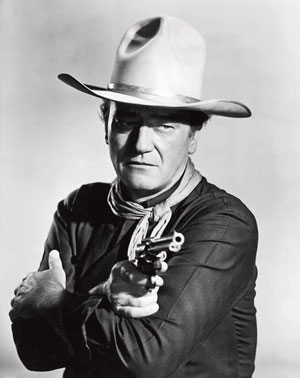
58. Trivia: In what film besides The Man Who Shot Liberty Valance (1962) does John Wayne refer to someone as “pilgrim”? The answer is McClintock! (1963).
59. Wayne approached Lee Marvin about appearing in The Man Who Shot Liberty Valance. “Which part would it be?” asked Marvin. “Liberty Valance,” Duke replied. Marvin: “Who’s the man who shot him?” Wayne: “Me.” Marvin: “Duke, if anyone’s gonna shoot me, I can’t think of anyone I’d rather be shot by.”
60. James Stewart on his costar in The Man Who Shot Liberty Valance and The Shootist: “People identify with me, but they dream of being John Wayne.”
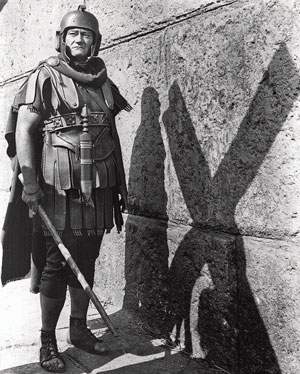
61. Billed as Michael Morris, John Wayne appeared in “The Colter Craven Story” (1960), the only episode of the TV series Wagon Train directed by John Ford. He plays Gen. William Tecumseh Sherman, a role he would play again for Ford in How the West Was Won (1962).
62. He made a cameo appearance as a Roman centurion at the crucifixion of Jesus in The Greatest Story Ever Told (1965). He had just one line: “Truly, this man was the son of God.” After his first attempt, director George Stevens said, “What we need in this line is something more. Look up at the man and give us some ... some awe.” Wayne nodded, and in his classic John Wayne drawl exclaimed, “Awwww ... truly this man was the son of God.” Yes, he was kidding. And he nailed the next take.
63. John Wayne on relationships: “I’ve had three wives, six children, and six grandchildren, and I still don’t understand women.”
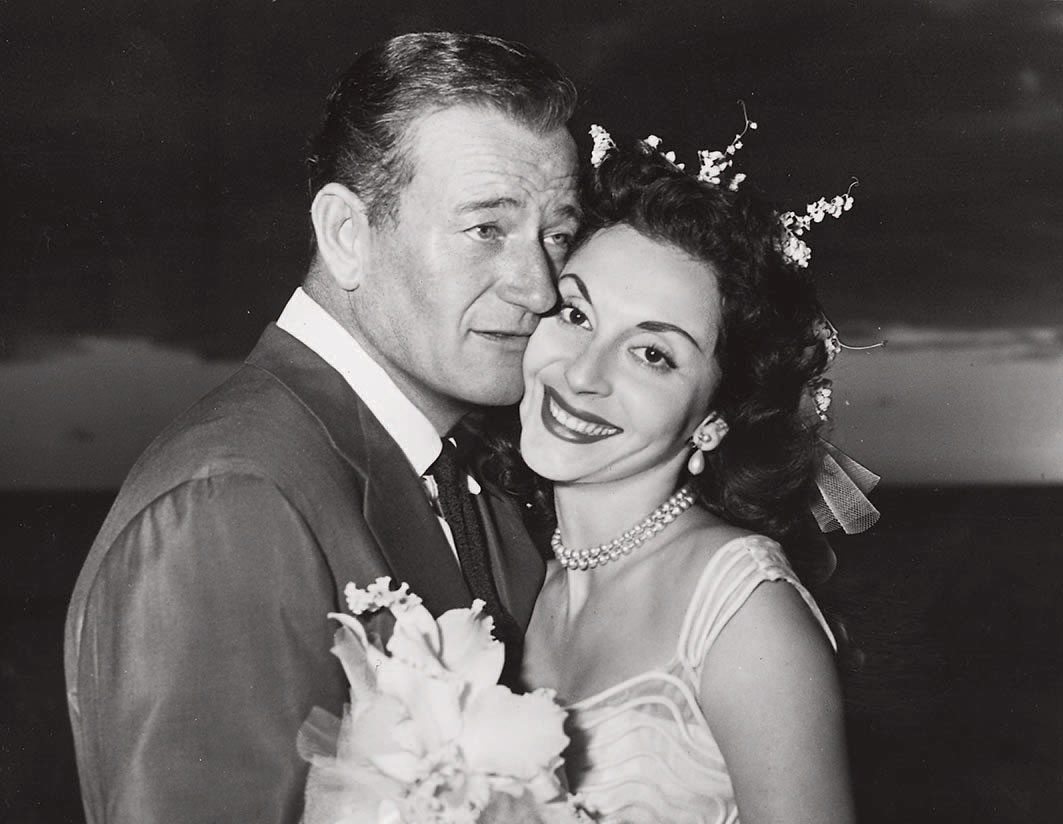
64. His third wife, Pilar, requested that the word obey be dropped from their marriage vows. Wayne consented: “None of the others ever obeyed me anyway.”
65. In a 1967 episode of The Beverly Hillbillies titled “The Indians Are Coming,” Granny is convinced that Indians will attack Beverly Hills: “Except for John Wayne there ain’t nobody knows [Indians] like me.” John Wayne makes a cameo appearance in the final scene: “I understand you were looking for me?” he asks. Granny replies, “Where was ya when I needed ya, John?”
66. Wayne’s alma mater USC bestowed on him an honorary doctorate in 1968 and the Asa V. Call Achievement Award in 1977; there’s also a bust of him in Heritage Hall. According to his daughter-in-law Gretchen, he remained a huge USC sports fan throughout his life. “You didn’t want to be around him if the Trojans lost,” she said.
67. Throughout his career, he was repeatedly asked to run for president. He always politely declined.
68. John Wayne on his heroic movie image: “I’ve been in more battles than Napoleon, and more wars than Germany. I’ve captured Bataan, Corregidor, Fort Apache, and Maureen O’Hara.”
69. Producer Darryl Zanuck publicly criticized actors who formed their own production companies and said that John Wayne had no right to produce, direct, and star in The Alamo (1960). Years later, Zanuck approached Wayne about playing Lt. Col. Benjamin Vandervoort in his World War II epic The Longest Day (1962). Remembering the insult, Wayne demanded $250,000 for what would be two days of shooting, while other cast members were paid $25,000. Zanuck consented. “It may be highway robbery,” Wayne later told his wife, Pilar, “but it serves the bastard right.”
70. What was John Wayne’s favorite John Wayne movie moment? The sequence in True Grit (1969) where Rooster tells Mattie (Kim Darby) about his past: “[That is] about the best scene I ever did.”
71. As he accepted the Academy Award for True Grit, his 159th film, Wayne whispered to presenter Barbra Streisand, “Beginner’s luck.”
72. After winning the Oscar, Wayne returned to work filming Rio Lobo (1970). Director Howard Hawks arranged a special greeting: cast and crew members, along with the horse, all wearing Rooster Cogburn eye patches.
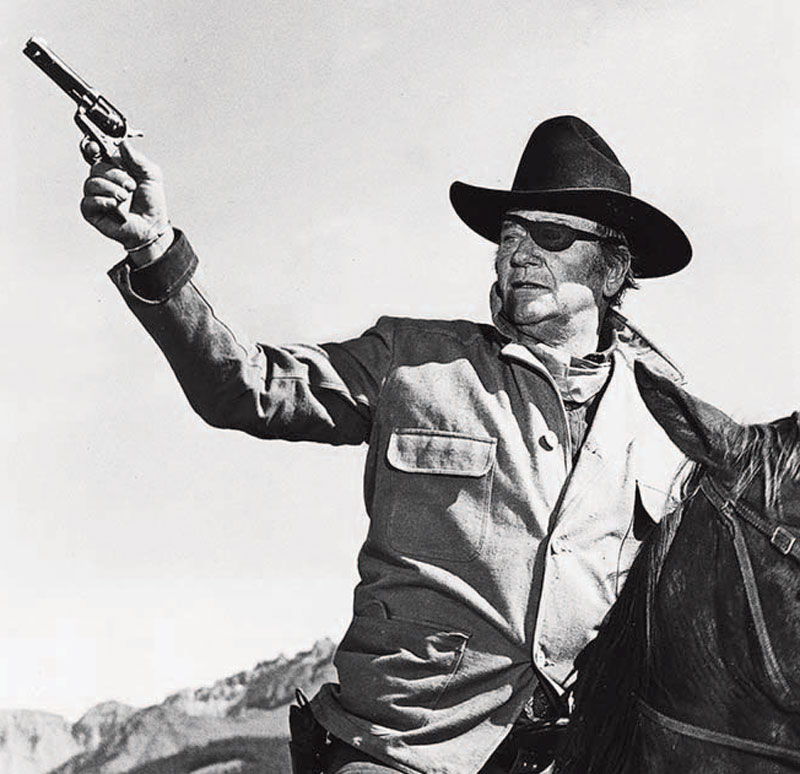
73. Wayne’s True Grit eye patch sold for $47,800 at Heritage Auctions.
74. In a 1969 Time magazine interview, Wayne was asked how he wanted to be remembered. He replied: “John Wayne: Feo, fuerte y formal.” Translated from Spanish: “He was ugly, was strong and had dignity.”
75. John Wayne’s star on the Hollywood Walk of Fame is located at 1541 Vine St.
76. C&I’s ranking of the 100 Best Westerns Ever Made features 18 John Wayne films, including The Searchers at No. 1 and Stagecoach at No. 2.
77. John Wayne on government: “I think government is a necessary evil, like say, motion picture agents.”
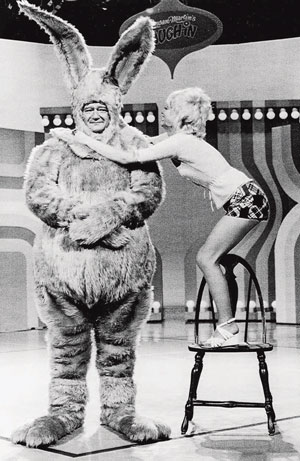
78. He had three secretaries, working five days a week, just to read his fan mail. Through the years he responded personally to thousands of letters.
79. He made more than a dozen appearances, including one as the Easter Bunny, on the 1960s counterculture comedy series Laugh-In. Best moment: his recitation of a poem called The Sky: “The sky is blue / The grass is green / Get off your butt and join the Marines.”
80. President Reagan recalled when Wayne and Jimmy Stewart attended his second inauguration as governor of California, during the height of the Vietnam War. “They encountered a crowd of demonstrators under the banner of the Vietcong flag,” Reagan remembered. “Jimmy had just lost a son in Vietnam. Duke excused himself for a moment and walked into the crowd. In a moment there was no Vietcong flag.”
81. Want to drink like Duke? John Wayne’s favorite adult beverage was
Sauza Conmemorativo Tequila Añejo.
82. The John Wayne Theater at California’s Knott’s Berry Farm theme park opened in 1971 and hosted the world premiere of Wayne’s film Big Jake. The theater was renamed for cartoonist Charles M. Schulz in 2000.
83. Prior to the advent of videocassettes and DVDs, John Wayne’s films always received high ratings when they were shown on television. The highest number was earned by a November 12, 1972, airing of True Grit on ABC. On that evening, 63 percent of all TVs in use were watching Wayne exclaim, “Fill your hand, you son-of-a-bitch.”
84. He never claimed to be a real cowboy, but John Wayne co-owned the 39-mile 26 Bar Ranch in Casa Grande, Arizona. Its cattle-handling and feeding facilities were created by famed animal science researcher Temple Grandin.
85. John Wayne’s choices for the five best motion pictures of all time: A Man for All Seasons, Gone With the Wind, The Four Horsemen of the Apocalypse, The Searchers, The Quiet Man.
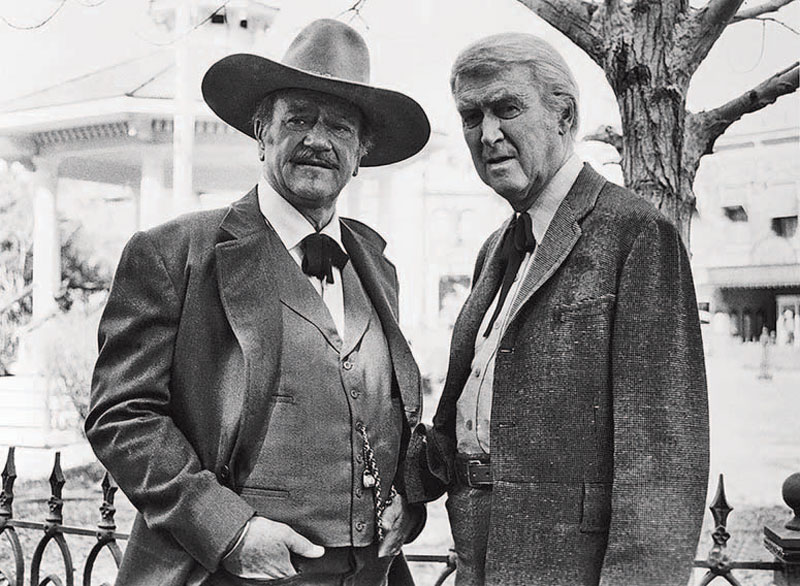
86. Out of 171 films, he died in only eight: He was shot in The Fighting Seabees (1944), Sands of Iwo Jima (1949), The Cowboys (1972), and The Shootist (1976). His most creative demise came courtesy of an octopus attack in Reap the Wild Wind (1942). His fate in The Sea Chase (1955) is uncertain — he may have drowned, or he may have made it to shore with Lana Turner.
87. Swing Out, Sweet Land, later retitled John Wayne’s Tribute to America, was a patriotic television special that aired November 29, 1970, on NBC. The cast included Bob Hope, Jack Benny, George Burns, Dean Martin, Red Skelton, Johnny Cash, Lucille Ball, Bing Crosby, Ann-Margret, Dan Blocker, Glen Campbell, Roy Clark, Lorne Greene, Michael Landon, and Hugh O’Brian. And it naturally featured Duke, who once called himself “an old-fashioned, honest-to-goodness, flag-waving patriot.”
88. In 1972, director Peter Bogdanovich and writer Larry McMurtry began working on a western titled The Streets of Laredo that would star John Wayne, Jimmy Stewart, and Henry Fonda. After Wayne passed, McMurtry reworked the script into the novel Lonesome Dove. When it was adapted for television, Robert Duvall played the role originally written for Wayne.
89. In 1973, John Wayne released the record album America, Why I Love Her, featuring his recitations of poems about the virtues of American life. The album was nominated for a Grammy and rereleased on CD after the 2001 terrorist attacks.
90. In 1973, The Harvard Lampoon challenged John Wayne to premiere his film McQ (1974) on their Cambridge campus. “You think you’re tough? You’re not so tough,” the Lampoon president wrote. “We dare you to have it out, head on, with the young whelps here who would call the supposedly unbeatable John Wayne, the biggest fraud in history.” Wayne accepted, responding with a letter of his own: “Sorry to note in your challenge that there is weakness in your breeding, but there is a ray of hope in the fact that you are conscious of it.” In the end, a good time was had by all.
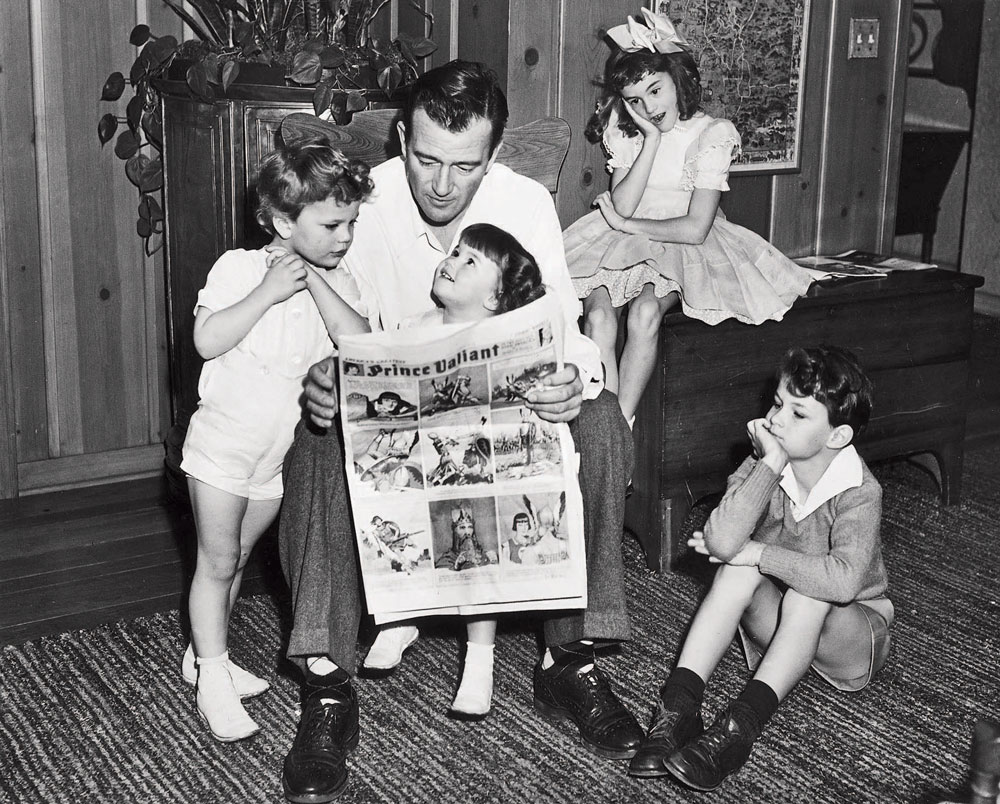
91. When family dinners were interrupted by fans and autograph-seekers, John Wayne would tell his kids not to get upset. “They pay the bills,” he said.
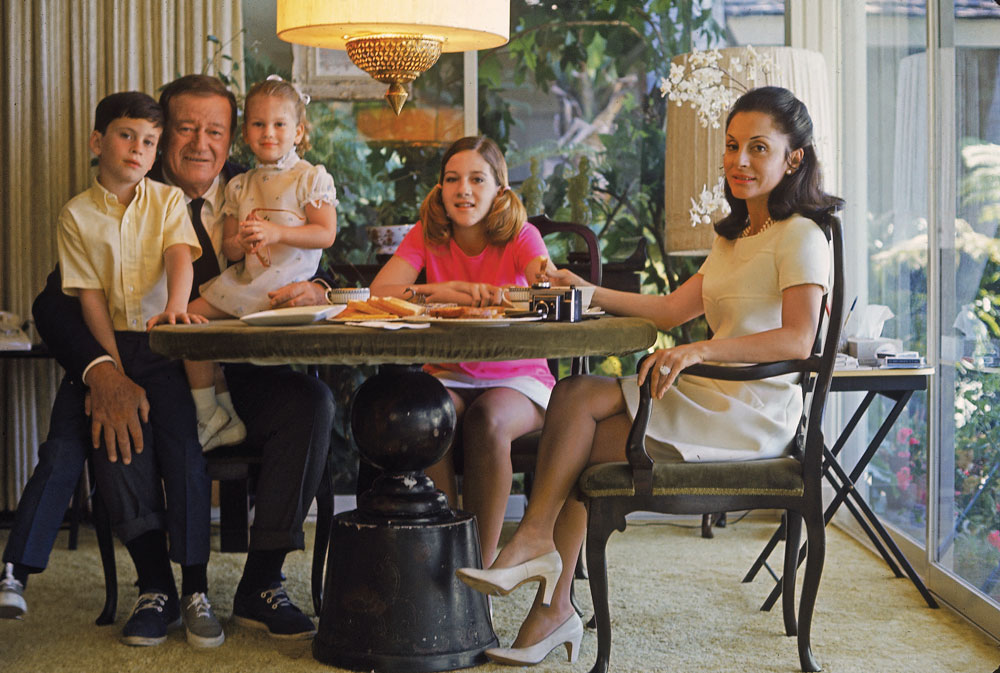
92. Polish immigrant John Shalikashvili, who served as chairman of the joint chiefs of staff and U.S. supreme allied commander (1993 – 97), taught himself English by watching John Wayne movies.
93. Wayne collected vintage Western firearms and Hopi katsinam. After his death, both collections were donated to the National Cowboy & Western Heritage Museum in Oklahoma City.
94. Katharine Hepburn on Wayne: “As an actor he has an extraordinary gift. A unique naturalness ... . He’s a very, very good actor in the most highbrow sense of the word. You don’t catch him at it.”
95. When Japan’s Emperor Hirohito visited America in 1975, he asked to meet John Wayne. Wayne, remembering his wartime films, seemed surprised: “I must have killed off the entire Japanese army.”
96. For his first film, Brown of Harvard, John Wayne was paid $7.50. For his final film, The Shootist (1976), he was paid $750,000
97. In 1977, Wayne began filming a series of television commercials for Great Western Bank. Two months after they began airing, the bank reported a gain in net savings of $21 million from new accounts.
98. John Wayne on nudity in movies: “I work with my clothes on. I have to. Riding a horse can be pretty tough on your legs and elsewhere.”
99. On June 20, 1979, the Orange County, California, board of supervisors renamed Orange County Airport as John Wayne Airport. The official resolution cites the decision as a way to honor “a man of humility, of honesty, and a hero of the American West [who] was a symbol to the world of the traditional American values.” The airport is home to a 9-foot bronze statue of John Wayne created by sculptor Robert Summers.
100. Director Michael Cimino tried to interest Wayne in playing Sheriff James Averill in his 1980 film Heaven’s Gate — the role was played by Kris Kristofferson.
101. John Wayne died on June 11, 1979. The flame of the Olympic torch at the Los Angeles Coliseum was lit in his memory. It remained lit until the funeral four days later.
102. In 1979, John Wayne was awarded a Congressional Gold Medal and posthumously received the Presidential Medal of Freedom in 1980.
103. After his death, a Tokyo newspaper ran the headline, “Mr. America Passes On.”
104. Jack Nicholson on John Wayne: “John Wayne, an actor, was more important to the mass psyche than any single American president.”
105. This quote appears on John Wayne’s gravestone: “Tomorrow is the most important thing in life. Comes to us at midnight very clean. It’s perfect when it arrives and puts itself in our hands. It hopes we’ve learned something from yesterday.”
106. The John Wayne Cancer Foundation was founded in 1985, six years after Duke’s death from stomach cancer at age 72. Its research has led to groundbreaking procedures and treatments.
107. In 2004, a postage stamp was issued featuring John Wayne as part of the U.S. Postal Service’s Legends of Hollywood series.
108. When Canadian-born impressionist Rich Little became an American citizen in 2010, he accepted the honor with the voice of John Wayne, saying, “America, I like the sound of the word.”
109. In 2016, 38 years after his death, John Wayne finished fourth in a Harris Poll ranking “America’s Favorite Movie Stars.”
110. John Wayne on his enduring popularity: “Let’s say I hope that I appeal to the more carefree times in a person’s life than to his reasoning adulthood. I’d just like to be an image that reminds someone of joy rather than of the problems of the world.”
Find out more about the man and the legend on the official John Wayne website. Read family reflections on John Wayne from his wife Pilar and his daughter Marisa in the January 2017 issue.
From the January 2017 issue.



